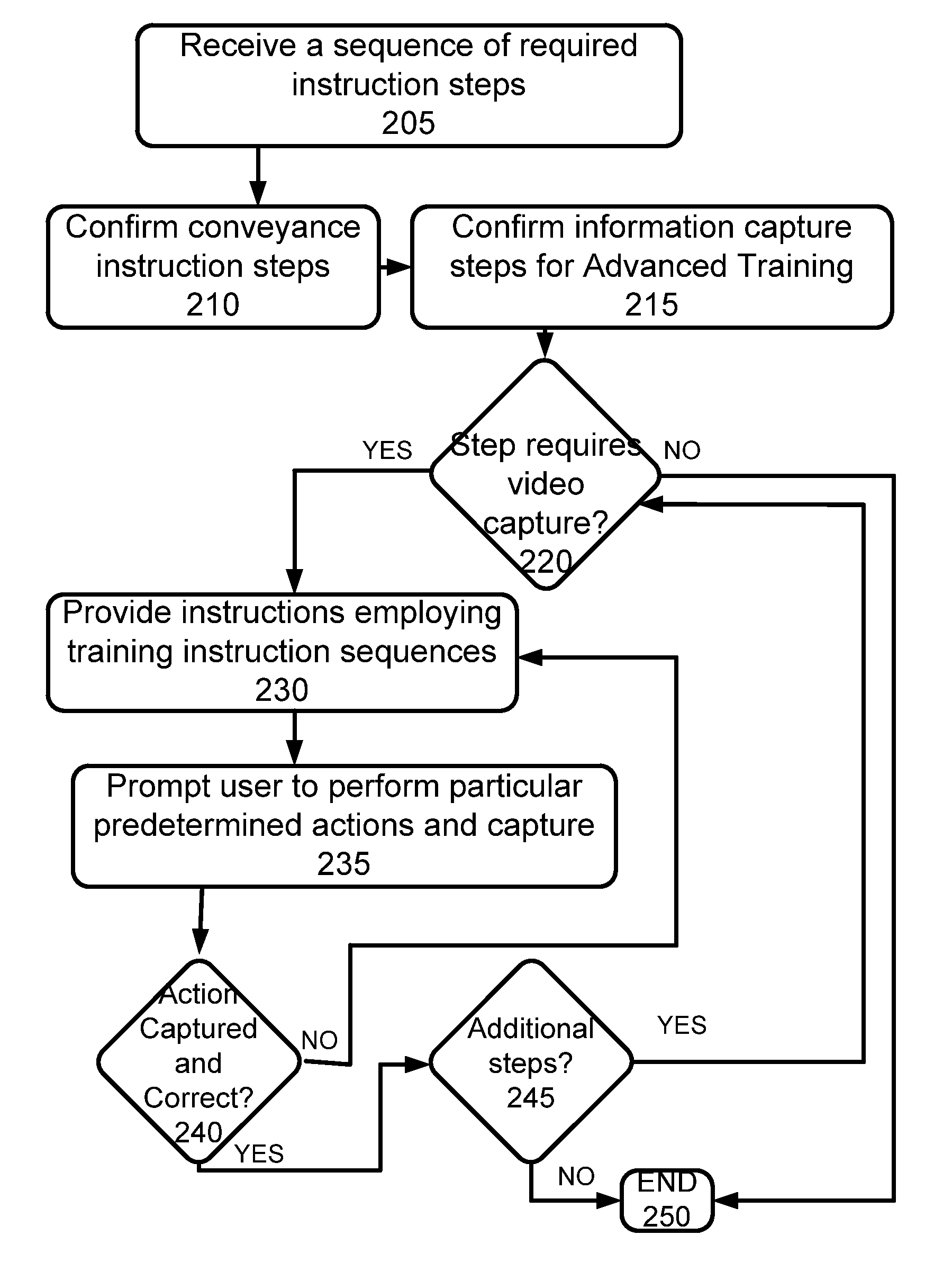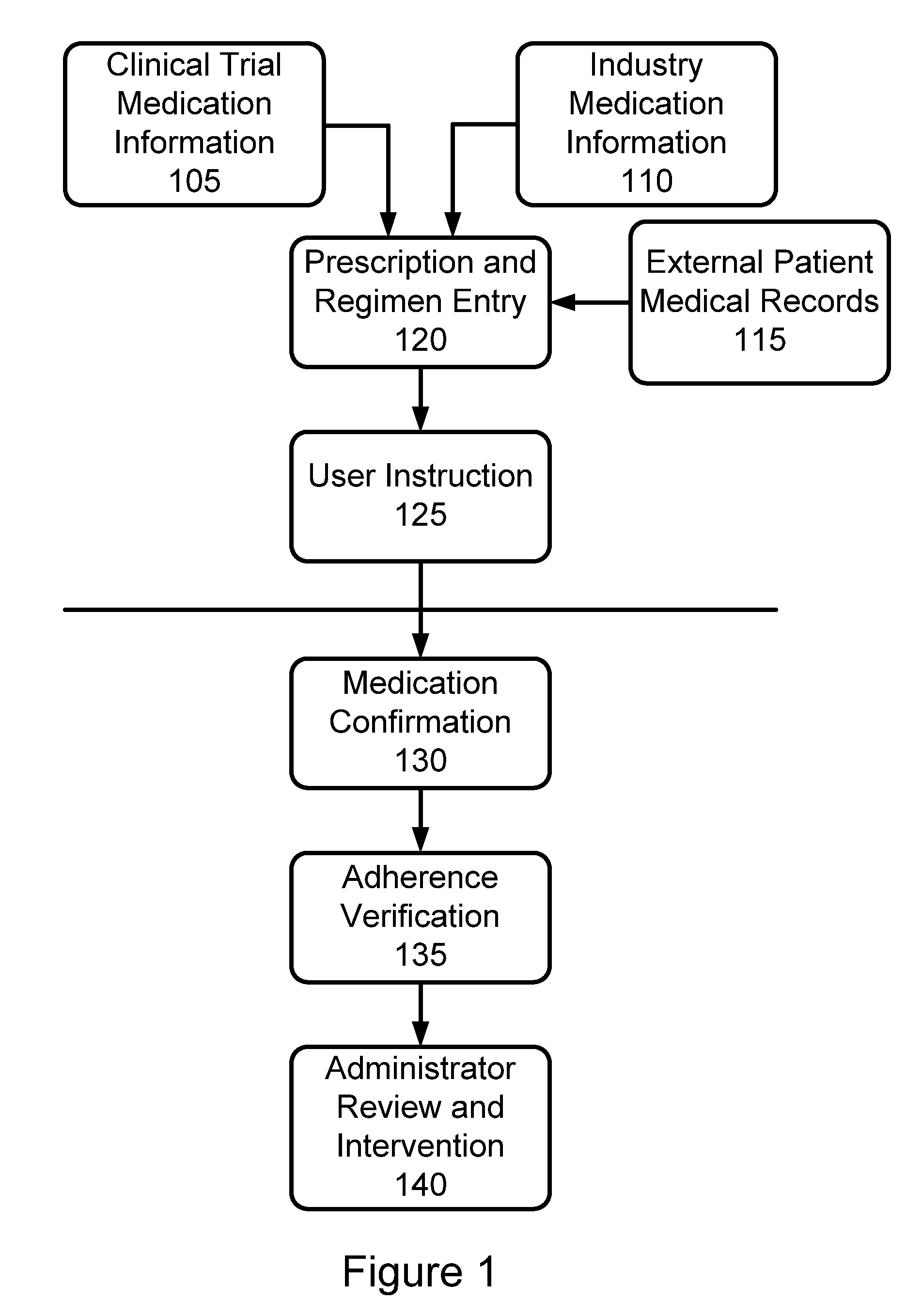Most importantly, the authors note “The ability of physicians to recognize nonadherence is poor, and interventions to improve adherence have had mixed results.”Adherence, p.
The authors conclude “
Poor adherence to medication regimens is common, contributing to substantial worsening of
disease, death and increased healthcare costs.”Adherence, p.
Giving instructions and then letting patients fend for themselves has been shown not to work particularly well.
This is because it is not only the improper
ingestion of medicines that is the primary cause of medical danger.
Rather, an overall lack of sufficient patient guidance is also part of the problem.
Further, the inability to confirm a proper prescription
regimen being provided to a user in the first place may cause a number of other problems with the use of such medication.
Thus, data collection is similarly limited to patient visits, rather than on a daily basis.
These old methods such as patient questioning and medication counting have been proven to be inadequate measures of adherence and offer no information on
dose timing and
drug holidays (omission of medication for three or more sequential days).
While smart packaging technologies exist such as RFID-enabled computer
chip technology, smart blister packs and MEMS caps (
microprocessor in a
bottle cap), they are: a) invasive and need to be physically attached to the medications; b) are non-conclusive regarding compliance—a patient may activate the technology without
ingestion of the medication; c) remain largely unadopted in clinical trials by the pharmaceutical and biotech companies due to their high cost; and d) take a longer time to implement.
These diaries, however, are still subject to issues related to compliance with
medication adherence.
Thus, even if a patient is meticulous about entering information into the diary, and thus complying with the requirements for
data entry, there is still no guarantee that they are properly
taking medication at prescribed times. Additionally, none of these techniques allow for the monitoring of non-
pill related medications, such as the user of inhalers or injectable medication.
These medication delivery systems require additional monitoring, as know when administration took place is not sufficient.
Rather, positioning and other technique issues may substantially affect the proper delivery and
efficacy of particular medications.
To date, technologies alone have only been used to monitor compliance rather than to encourage it.
Furthermore, there has been no comprehensive
system provided that allows for the management of multiple patients and multiple patient populations.
While such a
system provides many improvements for easing a burden on the patient, this
system suffers in many ways and in particular in ways relevant to the administration of clinical trials and other active patient monitoring of
medication adherence.
Most importantly, this system provides no mechanism for actually confirming that a patient is in fact properly administering required medication as required in a clinical
drug trial, as prescribed by a prescribing physician in the case where adherence to a particular
regimen may prove to be critical to
efficacy of the prescription
regimen, in various
public health scenarios, in situations where failure to keep up a prescription regimen can potentially harm a
population as a whole, such as the generation of antibiotic-
resistant bacteria strains, in various
disease management scenarios, or in home care situations where maintaining proper control of administering healthcare professionals is critical.
Further, while the system may be sufficient for one who is in full possession of their mental faculties, any individual who may have difficulty following directions, or one who is actively avoiding medication may still not be taking required medication after it is dispensed.
Furthermore, as it applies only to
pill based
oral medication, the system requires preloading of various medications into a dispenser, and thus likely requires regular visits by an administering manager to be sure appropriate medications are in fact properly loaded therein.
It is surely possible that an inexperienced user may place incorrect medications into the device, or may somehow provide incorrect dosages into the device.
Additionally, for potentially more complex regimens, there is no method provided for insuring that a user is able to follow such a protocol, and to thereafter confirm that the user has in fact taken all required medications in accordance with any provided instructions or the like, or has taken the medications according to one or more specifications or followed suggested procedures.
Furthermore, this system is expensive and requires constant maintenance to confirm that the various mechanical parts are in working order.
There is in fact no particular manner in which to ensure actual adherence or
ingestion of the medication, or the relationship of adherence to the
efficacy or safety of the
drug over time.
While adherence to medication in general is poor, requirements for use of inhalable medications, such as metered
dose inhalers (MDI) and dry inhalers, have an increased burden in that simply confirming actuation of such an
inhaler is insufficient.
However, use of proper technique with such inhalers is difficult to instruct and monitor in that between 28% and 68% of patients do not use metered-
dose inhalers or
powder inhalers well enough to benefit from the prescribed medication, and 39%-67% of nurses, doctors, and respiratory therapists are unable to adequately describe or perform critical steps for using inhalers.
Additionally, existing systems fail to maintain an audit trail for post administration review by a medical official or other
clinical trial administrator, and further cannot therefore confirm confirmation of proper medication administration or
population management.
 Login to View More
Login to View More  Login to View More
Login to View More 


